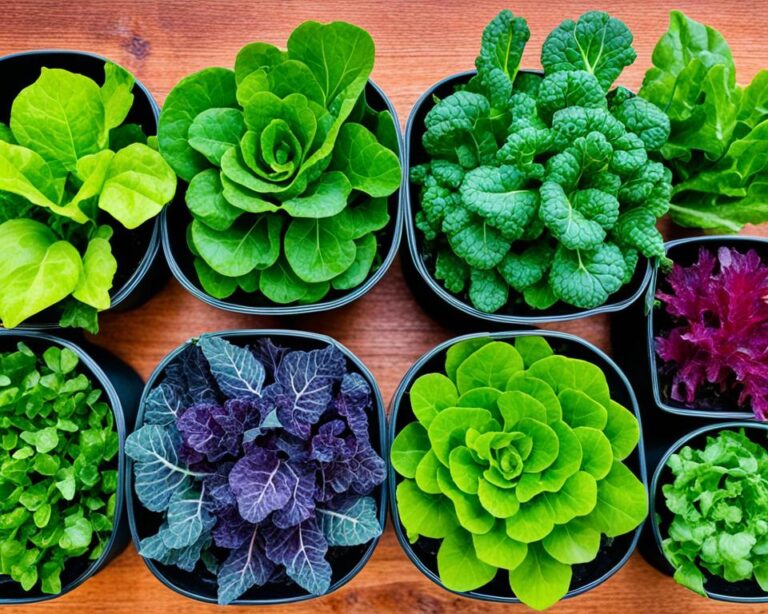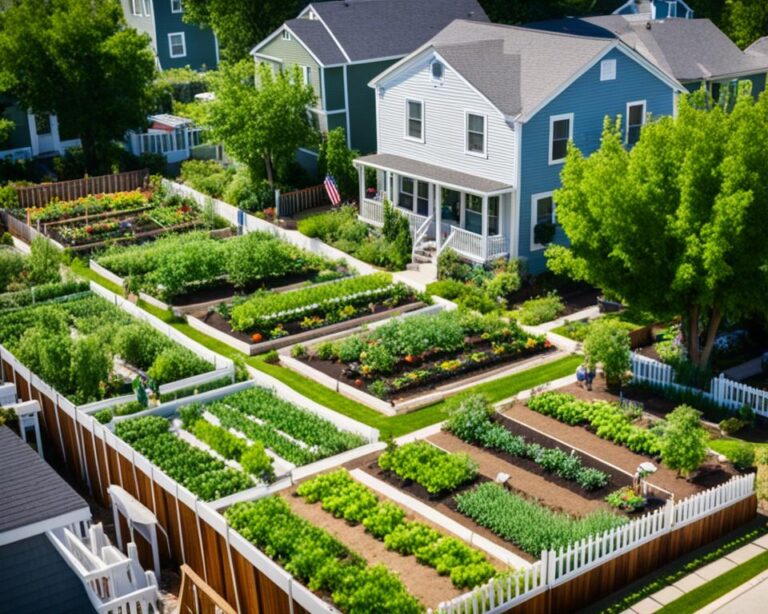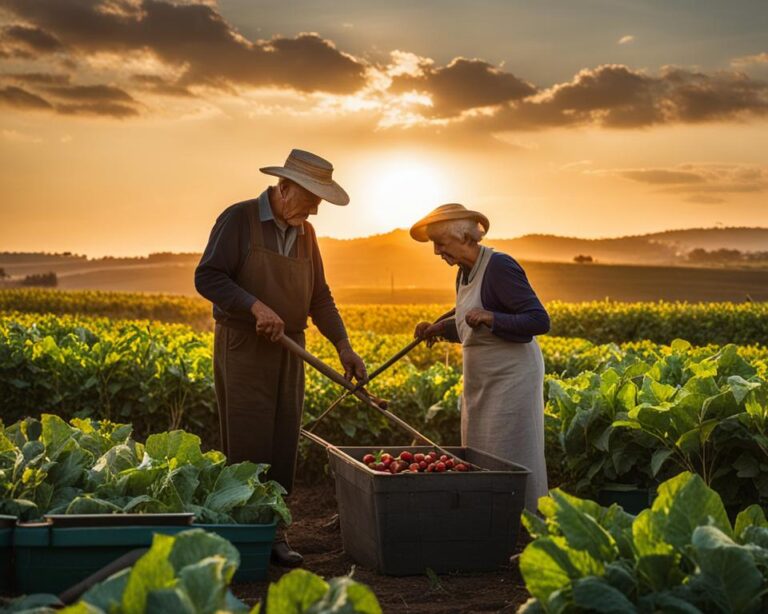Analyzing the Economics of Homesteading: Can You Save and Make Money?
Homesteading is more than just a lifestyle choice; it’s a path to sustainable living, self-sufficiency, and financial independence. By exploring the economics of homesteading, we can understand the costs, benefits, and potential for saving and making money in this thriving movement.
Homesteading offers a range of benefits that go beyond financial considerations. It allows us to reconnect with nature, reduce our ecological footprint, and create a sense of fulfillment by living a simpler, more intentional life.
However, it’s essential to analyze the financial aspects of homesteading to ensure its viability as a means of saving and making money. From the initial costs of land, equipment, and utilities to ongoing expenses like seeds, livestock, and maintenance, there are various financial commitments to consider.
But the potential for cost savings and income generation is substantial in homesteading. By growing our own food, raising animals for consumption or sale, and making use of renewable energy sources, we can reduce our dependence on external resources and save on daily expenses.
Additionally, there are opportunities for income generation within the homesteading community. From selling excess produce, homemade goods, or crafts at farmers markets or online platforms to offering services such as consulting, permaculture design, or workshops, there are avenues to explore for monetary gain.
Furthermore, homesteading communities provide invaluable resources, support, and knowledge-sharing opportunities. By connecting with like-minded individuals, we can tap into a pool of expertise, learn from each other’s experiences, and gain access to a network that can bolster our success in the homesteading journey.
Join us as we delve into the economics of homesteading, exploring the costs, benefits, and potential for financial independence. Discover how embracing a sustainable, self-sufficient lifestyle can not only improve your well-being but also create opportunities for saving and making money.
The Profitability of Permaculture Farms
Permaculture farms hold immense potential for profitability in the sustainable farming industry. While many successful farms focus on cultivating annual vegetables, there is a growing trend towards incorporating perennial systems. Additionally, permaculture design and consulting services offer lucrative opportunities for entrepreneurs in the farming business.
When it comes to profitability, marketing annual vegetables at farmers markets in affluent communities can be a highly effective strategy. The demand for locally sourced, organic produce is on the rise, presenting a profitable niche for permaculture farms. Skillful management of annual vegetable production, including crop selection, cultivation techniques, and efficient distribution, is crucial for maximizing profit margins in this competitive market.
However, the transition to perennial systems can also bring long-term financial benefits. Perennials require less input and maintenance over time, resulting in lower operational costs and potentially higher profit margins. Moreover, well-designed perennial systems can provide a reliable source of income year after year, reducing the risks associated with seasonal variations in annual crop yields.
Permaculture Design and Consulting Services
In addition to farming operations, permaculture farms can generate revenue through design and consulting services. Permaculture design involves creating sustainable and regenerative systems that mimic natural ecosystems, optimizing resource utilization and minimizing waste. By offering design services to other farmers, landowners, or businesses, permaculture farms can diversify their income streams and contribute to the development of sustainable practices across the industry.
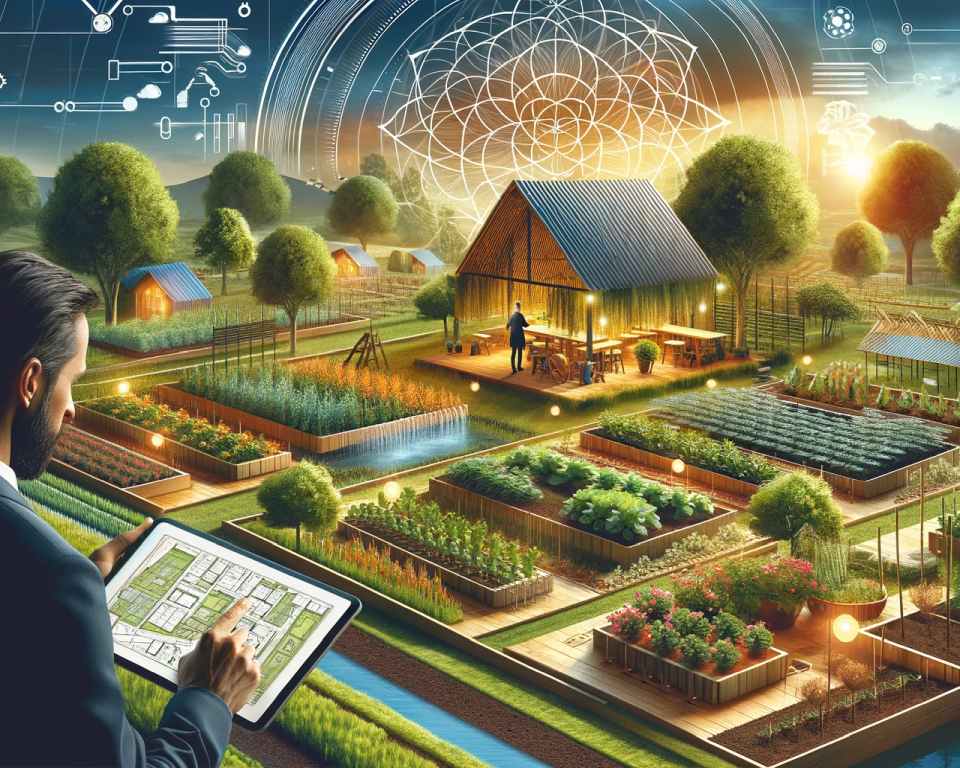
Permaculture consultants play a vital role in assisting individuals and organizations in implementing permaculture principles and strategies. They provide guidance on site assessment, system design, and ongoing management, ensuring the successful integration of permaculture principles into various projects. By leveraging their expertise, consultants can generate income while supporting the wider adoption of sustainable practices in agriculture.
“Permaculture farms have the potential to achieve both financial viability and environmental sustainability. By combining profitable crop choices, skillful management, and offering design and consulting services, sustainable farmers can create prosperous and resilient businesses.” – Permaculture Expert
Permaculture farms demonstrate that profitability and environmental stewardship can go hand in hand. Adopting permaculture principles and practices allows farmers to not only generate income but also contribute to the regeneration of the ecosystem and the preservation of natural resources. By embracing innovative approaches and fostering collaboration within the industry, permaculture farms have the potential to shape the future of sustainable agriculture.
Success Stories from Profitable Farms
When it comes to successful farms in the homesteading industry, there are two notable examples that demonstrate the potential for profitability: Shared Abundance Farm and Hillview Farms.
Shared Abundance Farm: A Testament to Longevity
One remarkable success story is Shared Abundance Farm, which has been in operation for over 25 years. This farm, run by a 75-year-old woman, has seen increasing profitability throughout its existence. With an annual gross income of approximately $150k, Shared Abundance Farm stands as a shining example of what can be achieved in the homesteading industry.
Shared Abundance Farm specializes in a diverse range of products, including kiwi, berries, grapes, mixed vegetables, and propagated starts of rare herbs and tomatoes. By strategically selecting high-demand crops and catering to the preferences of their target market, this farm has managed to carve out a profitable niche for itself.
Through hard work, dedication, and a deep understanding of their customers’ needs, Shared Abundance Farm has not only secured their place in the homesteading industry but has also proven that age is no barrier to success. They serve as an inspiration to aspiring homesteaders and an embodiment of the farm profitability that can be achieved.
Hillview Farms: Thriving with No-Till Practices
Hillview Farms, located in Auburn, CA, is another noteworthy success story in the world of profitable homesteading. This farm has found its stride by focusing on no-till annual vegetables, with lettuce, carrots, squash, and tomatoes as their primary income sources.
By adopting innovative farming practices that prioritize soil health, Hillview Farms has not only achieved financial success but has also contributed to the conservation of natural resources. Their commitment to sustainable agriculture and their focus on high-demand crops have allowed them to build a thriving business in the competitive world of farming.
Both Shared Abundance Farm and Hillview Farms serve as living proof that homesteading can be a profitable endeavor. However, as these success stories demonstrate, the future of small farms is not without challenges. One significant obstacle that homesteaders face is the issue of aging farmers.

Given the aging population of farmers, it is crucial to find sustainable solutions to ensure the viability and continuity of small-scale farming. As we continue to explore the economics of homesteading, we must also address the pressing concerns surrounding the aging workforce in the agricultural sector.
Homesteading in Retirement: Financial Self-Sufficiency and Multi-Generational Living
Homesteading in retirement offers a unique opportunity for financial self-sufficiency and a more affordable and sustainable lifestyle. It allows retirees to embrace a multi-generational living arrangement, fostering lasting memories and meaningful connections between family members. By growing their own fresh produce, generating their own energy, and crafting handmade items, retirees can not only achieve financial independence but also experience a deeper connection with nature and a sense of fulfillment in their golden years.
Retirement homesteading provides a pathway to reduce living expenses, as retirees are able to produce their own food, reducing the need for expensive grocery store purchases. This sustainable lifestyle choice not only benefits retirees’ wallets but also contributes to their overall well-being, allowing them to enjoy organic and nutritious meals straight from their own garden.
The financial self-sufficiency that comes with retirement homesteading not only brings a sense of freedom but also offers an opportunity to pass down valuable skills and knowledge to younger generations. Multi-generational living on a homestead fosters a strong sense of community, where family members learn from one another, work together, and create a legacy of self-sufficiency and sustainable practices.
The benefits of retirement homesteading extend beyond financial gains. Living closer to nature promotes physical and mental well-being, reducing stress and improving overall quality of life. Retirees can enjoy the beauty of their surroundings, bask in the tranquility of a sustainable lifestyle, and reap the rewards of their hard work.
Embracing retirement homesteading means embracing a lifestyle that promotes self-reliance, sustainability, and the joy of creating something with one’s own hands. Whether it’s tending to a thriving vegetable garden, raising livestock, or crafting handmade items, retirees can find purpose and fulfillment in their homestead activities.
In conclusion, retirement homesteading offers financial self-sufficiency and a sustainable lifestyle that is perfectly suited for multi-generational living. By growing fresh produce, crafting handmade items, and embracing a more self-sufficient lifestyle, retirees can enjoy the rewards of their labor and foster lasting connections with their loved ones. Retirement homesteading is not just a way to save and make money, but a pathway to a fulfilling and meaningful retirement.
Choosing the Right Homesteading Property
When embarking on the journey of homesteading, one of the most important decisions you’ll make is choosing the right property. Evaluating the land’s quality and assessing various factors is crucial to ensure a successful and sustainable homesteading experience.
To begin with, consider the climate of the area you’re interested in. Each region has its own unique climate patterns and seasonal variations that can significantly impact your agricultural efforts. Understanding the climate will help you determine the most suitable crops and livestock for your homestead, ensuring a thriving and productive environment.
Accessibility to utilities is another crucial factor to consider. Homesteading requires access to reliable water sources, electricity, and other utilities that are essential for daily living and the success of your homestead projects. Be sure to inquire about the availability and reliability of these utilities when evaluating potential properties.
The quality of the soil is a key determinant of your homestead’s productivity. Conducting a thorough evaluation of the soil will help you understand its composition, fertility, and suitability for different types of crops. Soil testing can provide valuable insights that will guide your agricultural practices and ensure optimal yields.
The proximity of the property to cities and towns is a practical consideration to keep in mind. While the allure of a secluded homestead may be strong, being close to population centers can offer advantages in terms of easy access to markets, services, and a supportive community of like-minded homesteaders.
Local zoning regulations should not be overlooked when choosing a homesteading property. Familiarize yourself with the regulations governing land use, building codes, and any restrictions that may affect your plans for development and expansion. Being aware of these regulations from the outset will prevent any surprises or conflicts down the line.

“Access to natural resources is crucial for sustainable living. Look for properties with abundant water sources, such as rivers, lakes, or wells. The presence of forests and woodlands offers opportunities for timber, foraging, and creating a biodiverse ecosystem.”
Once you have narrowed down your options, performing a comparative market analysis can provide valuable insights into the value, location, and amenities of potential properties. This analysis allows you to gauge whether the asking price aligns with the market value of the property and provides a basis for negotiating favorable terms.
Accessibility is an important factor to consider when choosing a homesteading property. Evaluate the terrain and topography to ensure ease of movement around the property, especially when it comes to elderly family members or individuals with mobility challenges. Consider the presence of any physical obstacles that may hinder accessibility, such as steep slopes or rocky terrain.
Choosing the right homesteading property is a crucial step in establishing a successful and sustainable homestead. By thoroughly evaluating the land’s quality, accessibility to utilities, natural resources, and conducting a comparative market analysis, you can make an informed decision that aligns with your homesteading goals and aspirations.
Upsizing Your Home for Multi-Generational Living
When it comes to multi-generational living, upsizing your home is a crucial consideration. Creating a comfortable and accessible living space involves taking into account the physical abilities of all family members. We understand the importance of ensuring that everyone can navigate the home with ease and have their needs met.
To begin, organizing your finances and setting a budget is essential. By assessing the funds available, you can determine the feasibility of upsizing your home. It’s important to consider all expenses, such as construction materials, labor costs, permits, taxes, insurance, and other related expenditures. By creating a comprehensive budget, you can make informed decisions and avoid any unexpected financial burdens.
“When upsizing your home, it’s vital to consider the accessibility needs of all generations. Ensuring a comfortable living environment for everyone will contribute to a harmonious and inclusive family dynamic.”
Exploring financing options is another key step in making upsizing feasible. Grants, loans, and other funding sources can provide the necessary resources to complete the project. By researching and considering various financing options, you can find a solution that aligns with your financial goals and circumstances. Our team is here to guide you through this process, ensuring you have the information and support you need to make the best decision for your family.
Planning for a Brighter Future
- Consider the physical abilities and needs of all family members when upsizing.
- Organize your finances and set a budget to avoid unexpected financial burden.
- Explore various financing options to make upsizing feasible.
By upsizing your home for multi-generational living, you can create a space where everyone feels comfortable and supported. With careful planning, organizing your finances, and exploring financing options, you can make your vision a reality. Our team is here to assist you throughout this process, ensuring your upsizing journey is smooth and successful. Together, we can create a home that fosters lasting memories and meaningful connections for generations to come.
Building a Strong Community for Homesteading
Homesteading encourages community-based living and a return to an agrarian society. By fostering a supportive and resilient community, we can navigate challenges and find a sense of security and connection in an increasingly uncertain world.
Building a strong community starts with getting to know and supporting our neighbors. Taking the time to reach out and establish relationships creates a foundation of trust and cooperation, making it easier to rely on one another during times of need.
Bartering and Neighborly Support
Bartering is a fundamental aspect of community-based living. By exchanging goods and services directly, we can leverage each other’s skills and resources, strengthening our self-sufficiency. Whether it’s trading fresh produce for homemade soap or lending a helping hand in exchange for carpentry expertise, bartering allows us to rely on our neighbors and build a resilient community.
Neighborly support is essential for a thriving community. When we look out for one another, we create a network of care and assistance. Checking in on elderly or vulnerable neighbors, assisting with tasks, and providing emotional support can make our community more inclusive and compassionate.
The Power of Self-Sufficiency
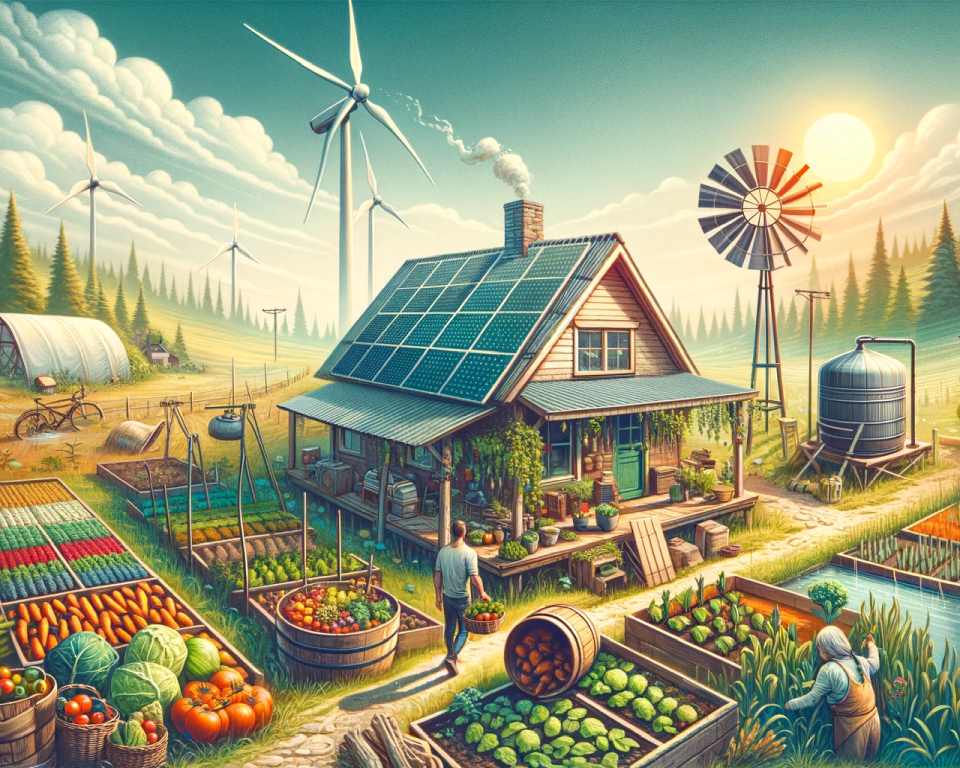
At the heart of homesteading is the pursuit of self-sufficiency. Embracing this mindset allows us to rely less on external systems and tap into our own resources. From growing our own food to generating our own energy, self-sufficiency empowers us to create a sustainable lifestyle and reduces our dependence on fluctuating markets or external forces.
When we foster a sense of self-sufficiency in our community, we not only become more resilient but also inspire others to embrace a similar way of life. Together, we can create a better future.
In conclusion, building a strong community for homesteading involves knowing our neighbors, supporting one another, bartering for goods and services, and embracing a sense of self-sufficiency. By fostering connection and resilience, we can navigate the challenges of homesteading and create a vibrant and supportive community.
Preparing for Financial Uncertainty
In light of the potential recession or depression that lies ahead, it’s crucial for us to be well-prepared for any financial uncertainties that may arise. By taking proactive measures to secure our finances, we can navigate economic downturns with confidence.
One way to prepare for financial uncertainty is by developing sustainable skills. In times of economic instability, having skills that are in demand can provide us with opportunities for self-employment and additional income. Consider learning a trade or acquiring a new skill that aligns with sustainable living, such as organic farming, renewable energy installation, or eco-friendly construction.
Reducing debt is another important aspect of preparing for financial uncertainty. By managing our debts wisely and minimizing unnecessary expenses, we can alleviate financial burdens and create a safety net during challenging times. It’s essential to prioritize paying off high-interest debts and developing effective debt management strategies.
Furthermore, embracing a more self-sufficient lifestyle can help mitigate the impact of financial instabilities. By growing our own food, generating our own energy, and practicing sustainable living habits, we become less reliant on external resources and more resilient to economic fluctuations. Consider exploring sustainable practices such as composting, water conservation, and energy-efficient technologies.
Financial preparation is not a luxury; it is a necessity. We must be proactive in securing our financial well-being, especially in the face of potential economic challenges. By equipping ourselves with sustainable skills, exploring self-employment opportunities, managing our debt, and embracing self-sufficiency, we can build a solid foundation for financial stability.
The Role of Homesteading Communities in Troubled Times
Homesteading communities, such as Homesteaders of America, are an essential source of support, education, and resources for sustainable living. In troubled times, these communities play a vital role in fostering resilience and providing a sense of belonging and connection to individuals and families. By coming together, sharing knowledge and experiences, and working towards common goals, homesteading communities can navigate economic challenges and inspire others to embrace self-sufficiency, financial independence, and a more sustainable way of life.
Homesteaders of America and similar communities offer a wealth of support through their vast network of like-minded individuals. Through workshops, seminars, and online forums, community members can access valuable educational resources to learn about various homesteading practices, from organic gardening to animal husbandry and renewable energy systems. This knowledge empowers individuals to engage in sustainable living practices and build resilient homesteads, regardless of external economic circumstances.
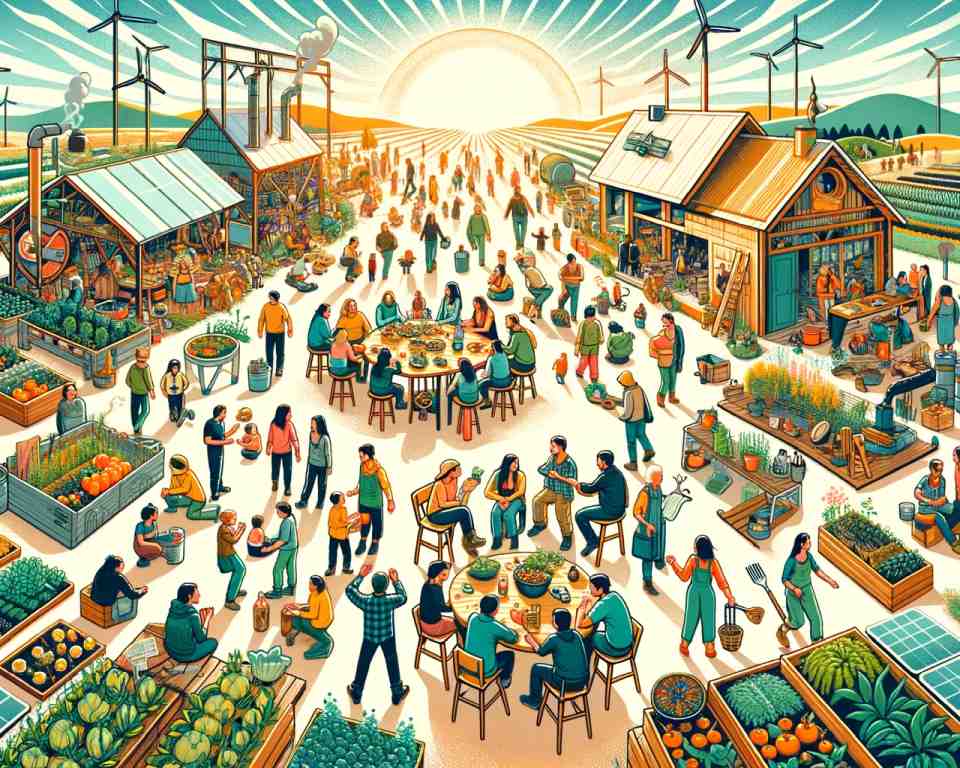
Moreover, homesteading communities foster a strong sense of camaraderie and mutual aid, where members can rely on each other for support and assistance. The spirit of community support contributes to the development of skills like bartering and sharing resources, ensuring that everyone has access to the necessary tools and knowledge for a successful homesteading journey. By promoting collective action and interdependence, these communities create a safety net that enhances the resilience of individual homesteads and the broader network as a whole.
With a commitment to sustainable living, homesteading communities like Homesteaders of America exemplify the importance of resilience and self-sufficiency in troubled times. By embracing sustainable practices, building strong social bonds, and fostering a supportive community, homesteaders can navigate economic challenges with confidence, ensuring a more secure and sustainable future.
FAQ
What is the economics of homesteading?
The economics of homesteading involve analyzing the costs, benefits, and potential for financial independence in sustainable and self-sufficient living.
Are permaculture farms profitable?
Yes, permaculture farms have the potential for profitability, especially through design and consulting services, as well as marketing annual vegetables at farmers markets in affluent communities.
Can you give examples of successful farms?
Yes, Shared Abundance Farm and Hillview Farms are both examples of profitable homesteading farms, grossing about $150k per year and focusing on kiwi, berries, grapes, and mixed vegetables, along with no-till annual vegetables, respectively.
What are the benefits of retired homesteading?
Retired homesteading offers financial self-sufficiency, a more affordable and sustainable lifestyle, multi-generational living opportunities, and the chance to generate fresh produce and handmade items for personal use or sale.
How do I choose the right homesteading property?
To choose the right homesteading property, evaluate factors such as quality of land, climate, accessibility to utilities, soil quality, proximity to cities, local zoning regulations, and availability of natural resources like water sources and forests.
What should I consider when upsizing my home for multi-generational living?
When upsizing your home for multi-generational living, consider physical abilities, strength, mobility, and budgetary aspects such as construction materials, labor costs, permits, taxes, and insurance. Additionally, explore financing options.
How does homesteading encourage community-based living?
Homesteading encourages community-based living by fostering relationships with neighbors, sharing resources, bartering for goods and services, and promoting self-sufficiency within a supportive community.
How can I prepare for financial uncertainty through homesteading?
You can prepare for financial uncertainty by developing sustainable skills, exploring self-employment opportunities, reducing debt, and learning how to live more self-sufficiently, which can help mitigate the impact of economic downturns.
What role do homesteading communities play in troubled times?
Homesteading communities like Homesteaders of America provide support, education, and resources for sustainable living. They foster resilience, offer a sense of belonging and connection, and inspire individuals and families to embrace self-sufficiency and a more sustainable way of life.




